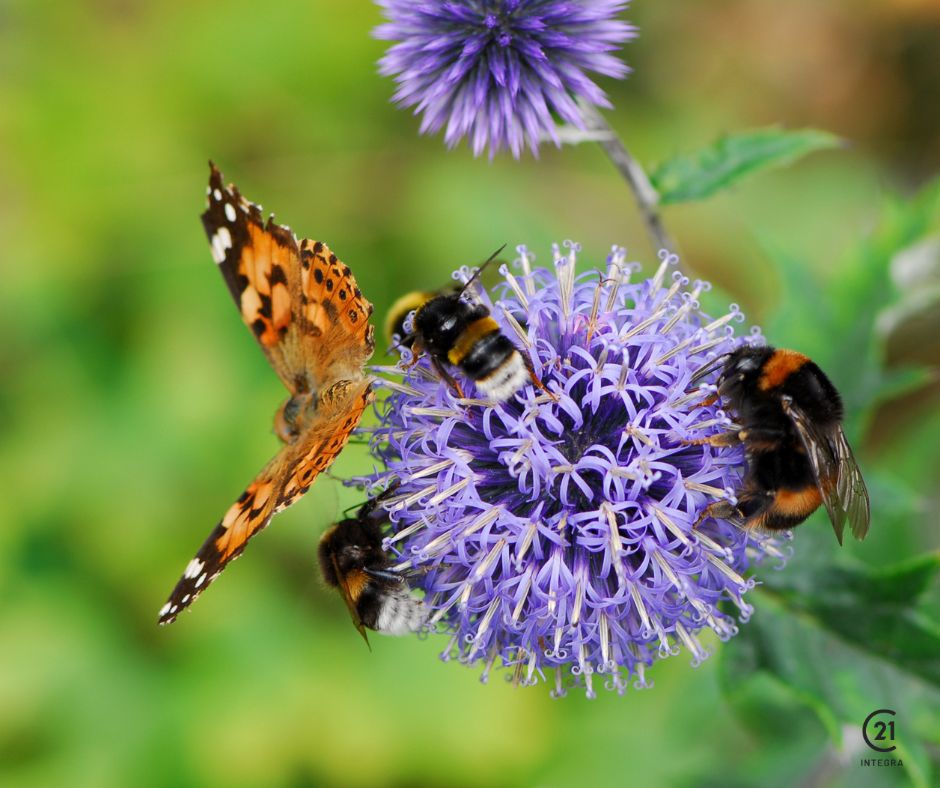Contributing Author: Olivia Forgette
You may imagine eco-friendly swaps to be changes such as household substitutions or reducing your carbon footprint with lifestyle choices. But something else to consider, your outdoor space at your home. We are here to help give you some eco-friendly landscape ideas for Illinois.

If you’re looking to upgrade to a new property here in Illinois, we hope you trust Maureen Forgette with all your real estate needs. In fact, landscaping can help increase your home’s property value by 15-to-20-percent on average, especially low-maintenance landscaping (aka native plant gardens, more on this later).
Green lawns
You may have heard in recent news how the more traditional green lawn is surprisingly bad for our environment. This has some states in the U.S., most notably Nevada and parts of California, banning grass lawns entirely. Here is an explanation on why traditional grass lawns are bad for our ecosystem:

- Fertilizers used on lawns wash into storm sewers causing pollution to our fresh water supply
- Grass lawns waste water to maintain a green look, with an estimated one-third of all public water being used to water grass
- Nitrogen-based fertilizers that are often used to maintain grass lawns release carbon into our atmosphere, and after using these products on your lawn, nitrogen dioxide, a known greenhouse gas, is released (all bad pollutants that contribute to global warming)
- Green lawns add to habitat loss for important insects and animals
What can you do instead?
Here in Illinois, there are definitely eco-friendly landscape swaps you can make to help reduce the carbon footprint of your property. There are an abundance of Midwestern native plants that are aesthetically beautiful, low-maintenance, and will help combat climate change and habitat loss.
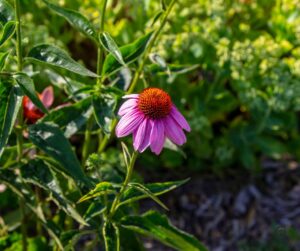
Creating a native garden
Even if you’re not ready to ditch your grass lawn completely, a great eco-friendly landscape idea for Illinois is to create a native garden on your property. A native garden is a garden space comprised of plants indigenous to a region prior to European colonization. Think of trees, shrubs, wildflowers, and grasses that have evolved over thousands of years with our local climate and soil.
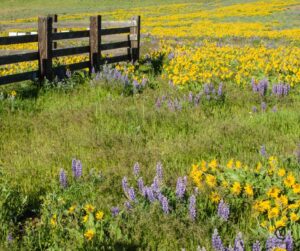
Here in Illinois, native plants are hardy and are designed by nature to withstand the extremely cold winter season, and very hot and humid summer months. Native plants to Illinois are not only beneficial to our local ecosystem, but they also are extremely easy to maintain and care for as a homeowner.
Some benefits to ditching your green grass lawn and swapping for a native plant garden include:
- Native plants use less water overall
- These types of plants make your soil healthier and prevent flooding and erosion
- Native plants are hardy and don’t require fertilizers or chemicals to keep them happy and thriving
- Maintaining a native plant garden is much less work than a grass space (less mowing, less pollution from lawn tools, less watering)
- Native plants help improve air quality
- These kinds of plants are less susceptible to disease
Native plants in Illinois are designed to:
- Thrive in local soil
- Have deep roots that prevent soil erosion and reduce flood risks
- Provide the perfect home for local pollinators and wildlife
Why are pollinators important in Illinois
When making an eco-friendly landscape at your home, you’re truly doing your part in protecting local pollinators. Pollinators are extremely important. They help support $10 billion in U.S. economic value, pollinators help ensure we have food to eat (approximately one-in-three bites of food you take is brought to you from a pollinator), and the existence of most other living things depends on them.
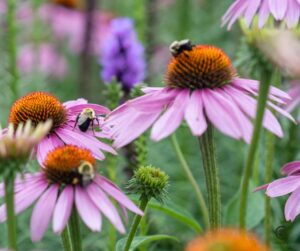
Native plants in our area have evolved to be perfectly synced with pollinators. Native plants provide pollinators with:
- Food and shelter
- Adequate nutrients (whereas non-native plants are nutrient deficient for local pollinators)
- Evolution together ensures native plants are sized appropriately for the pollinators to successfully reach the pollen
- The start of the food chain for all animals in your area
- Nests for butterflies and birds
Getting started

It can feel overwhelming considering digging up your lawn and replacing it with a native plant garden. It doesn’t have to be an all-or-nothing mentality. Creating a large flower bed for your native garden is a great place to start. Some tips for selecting your eco-friendly native plants include:
- Choose a local species that matches the growing conditions of your location
- Purchase your plants from a reputable grower
- For most residential gardens, it’s important to select native perennials that grow less than three-to-four feet high
- Plant into your natural, existing soil, rather than using fertilizers or infused soils from the store
- Hand pull-out any weeds to help reduce competition for water and light
- Wait to tidy your garden until spring, as many butterflies and pollinators use leftover leaves or plant stems to survive in the winter
Other things to consider when starting an eco-friendly native plant garden are plant diversity, host plants for pollinators, and habitat features for local wildlife.
Specific Illinois native plants to choose from
If you’re thinking of adding a native plant garden to your property (which you should!), here are some of our top picks for eco-friendly landscaping:
- Wild bergamot – Thrives in full sun, beautiful purple blooms, tolerates most soil conditions
- Milkweed – The state flower of Illinois is also an essential for important butterfly pollinators. These thrive in full sun and dry soil
- Golden alexanders – Thriving in partial to full sun, these beautiful golden blooms can tolerate heavy clay soils and is an excellent low growing option
- Short’s aster – Blooming late summer, the short’s aster offers darling lavender flowers and helps pollinators prepare for the long, cold winter
- Native grasses – There are loads of varieties of tall, beautiful native grasses for your landscape. These add gorgeous height to your design, and create an ecosystem for essential animals
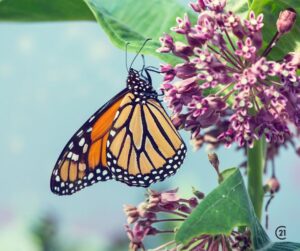
Some additional native plants to choose from can be found here!

